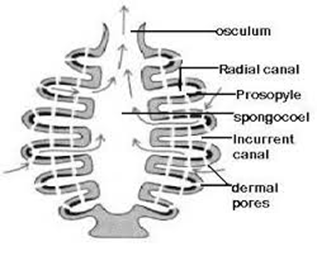Explain principle of electron microscopy : Biology Blog
Principle of electron microscopy
Around 1931-32, two German scientists, Knoll and Ruska invented transmission electron microscopy and developed a transmission the electron microscope (TEM) around 1940.
Principle - A strong beam of electrons discharged from tungsten filaments after supplying them with high voltage electronic current, pass through a vacuum and refocussed electromagnets. Radiation (wavelength 0.05 angstrom) is produced from it which is utilized as a source of illumination to the objects. An image is formed when electrons strike on a fluorescent screen or on a photographic film. Several hundred thousand times magnifications and resolution of about 5 angstroms can be achieved by TEM.
The compound of a transmission electron microscope -
- Electrogun - it is located on the top of the microscope. It works as a source of electrons. It consists of tungsten filament surrounded by a negatively biased shield with an aperture from where an electron beam is drawn off to ground and positive anode.
- Microscope column - It is made up of an evacuated metal tube. Inside this tube, a number of electromagnetic lenses, viewing screen, and the photographic plate are fitted.
- Electromagnetic lenses - Like a light microscope, three different lenses are used in an electron microscope which redesigned as a condenser, objective, and projector lenses. However, the lenses are not of glass but consist of coils of electric wire wound on a hollow metal cylinder. An electric current passing through the coil produces a magnetic field in the center of the cylinder. An electric current passing through the coil produces an amagnetic field that forces the electrons to converge at a point and function as a magnifying lens.
- Fluorescent screen - It is the place of image formation. The electrons are harmful to the eyes.
Working of TEM - The electron microscope needs high voltage current for the electron gun and electromagnetic coils. For this, a high voltage transformer of 220 V to 50-100 KV is used.
Electrons pass through the condenser coil to the object and then scattered and transmitted through the objective coil which magnifies the image of the object. The projector coil further magnifies the image and projects it on the fluorescent screen. The magnification can be increased by fitting an additional intermediate lens between the objective and projector lenses. The image formation occurs when the energy of the electrons is transmitted into visible light through excitation of the chemical coating of the screen. Have You read important zoology question -




Comments
Post a Comment